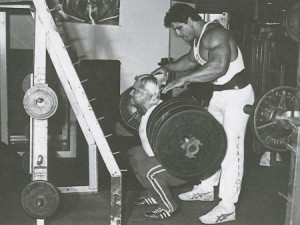Introduction
One of the first pieces of equipment a trainee will want to consider is a weightlifting belt. I recently bought a new one (more on that later), so I thought this would be a good time to write about this topic.
The “Weaken Your Abs” Myth:
Some believe wearing a belt weakens your abdominal muscles. This is not true–a belt gives your abs something to push against, so they are very much involved in a belted lift. I would, however, advise you to only wear a belt during: squats, deadlifts, and military/overhead press. Putting one on as soon as you walk in the gym is counterproductive.
Let me add something else here: I would also advise you to train “beltless” for your first few months. Just work on your form and start building your foundation before using any equipment. After that you may want to consider using one (more on how to use it later).
Why Use a Belt?
As I’ve mentioned, wearing a weightlifting belt while training gives your abs something to push against, which raises your intra-abdominal pressure during the lift. This increased pressure adds stiffness to your trunk and gives you more stability.1 There’s also some evidence to suggest a belt can reduce compression on your spine when used properly (when you inhale in order to push your abs against it).2
Here’s the bottom line: most people find they can lift more with a belt than without. All things being equal, pushing or pulling more weight will accelerate your gains in size and strength.
There are two more benefits I’ll mention before moving on:
Awareness: having a belt on may help you be more aware of your posture and body positioning while training. This is kind of hard to explain, but you’ll know what I’m talking about when you experience it–you simply have a better “feel” for your stance, position, etc.
Back Warmth: I like to wear a lose belt even during my warm-up sets for the squat and deadlift. It helps get my back warmed up (and keeps it that way).
Types of Belts and Buckles
Width
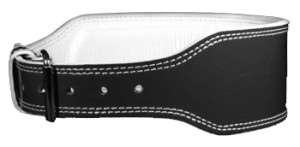
Start training in a typical gym and chances are you’ll see a belt that looks something like this: wide in the back and narrow in the front. This is a very common style, but it’s not what I would recommend if you are wanting to get the maximum benefit. I would encourage you to invest your money in a powerlifting style belt–one that is a uniform 4-inch width all the way around (you’ll see pictures of this style below). Remember something I said earlier: a belt gives your abs something to push against. A powerlifting belt is perfect for this purpose.
Thickness
You’ll see two thicknesses available if you start shopping around: 13 mm and 10 mm. The thicker (13 mm) belts are going to be stiffer and take longer to break in. Most lifters (including yours truly) go with the thinner 10 mm belts–13 mm is overkill for the needs of most trainees.
Buckles
Now let’s talk about the most commonly available types of buckles: lever, single prong, and double prong.
Lever Belts
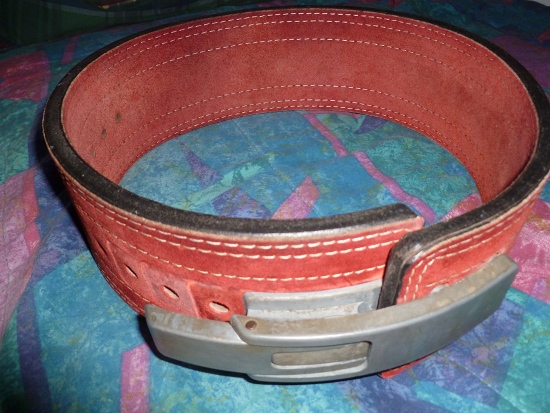
Pictured here is the first powerlifting belt I ever owned, and as you can see, it a lever belt. I bought this one almost twenty years ago and it’s still holding up nicely (the site I bought it from no longer exists).
The biggest advantage of a lever belt is the quickness with which you can tighten and loosen it. One quick motion and you’re either ready to lift or ready to rest after your set.
The biggest disadvantage of a lever belt is the fact that you need a screwdriver to adjust it. This may not be a big deal, but it’s something to consider.
One more thing: I’ve heard people expressing concern over the lever breaking (due to metal fatigue, etc.), but I’ve never had this problem. You could always buy a replacement if this happened.
Single-Prong Belts
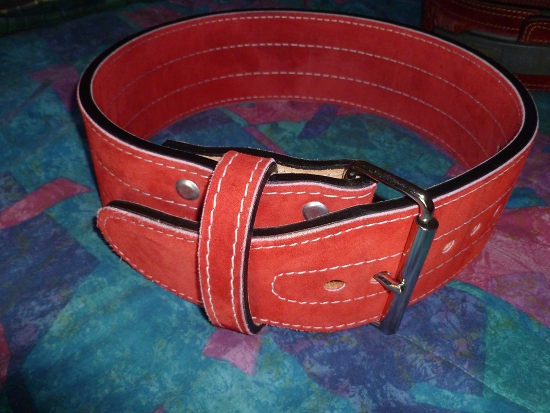
I recently ordered this single prong belt from bestbelts.net, and so far I’m really happy with it.
The advantage of a single-prong buckle is the relative ease with which you can adjust the waist size. Right now, for example, I’m at my “winter weight”–about ten pounds heavier than I usually am during warmer months. I can just pull the belt a little tighter as I get leaner.
There may be times that you need to adjust the belt tightness more frequently than seasonal weight differences. You may, for example, want to experiment with what feels right for a particular lift or even a particular day. This is what I’m enjoying about a single prong belt.
Needless to say, the disadvantage of a prong belt is that it’s a little more difficult to tighten or loosen it (compared to a lever belt). But so far this hasn’t been a big deal at all for me.
Double-Prong Belts
Two prongs theoretically increase stability and add to the life of the belt (since the stress is distributed over two holes). But the extra prong makes these belts more difficult to use/adjust, and I doubt it it is worth the extra hassle for most trainees. But if you if you just have to look like “the Wolverine” when you train . . .
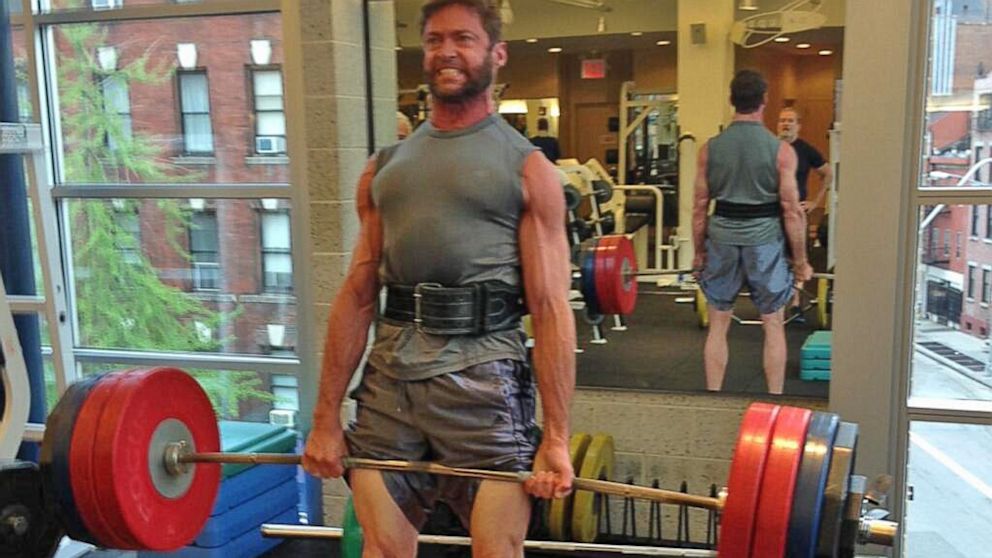
Using a Belt
As I mentioned earlier, I would recommend you only use a belt for lifts that put compression of the spine: squats (including front squats), deadlifts, and overhead/military press.
How heavy should you go before putting it on? There’s no hard-and-fast rule for this, and you can experiment and see what works for you. I usually put mine on loosely even for warm-up and lighter sets on the before-mentioned exercises. This doesn’t give any real support, but it does help get my back warmed up. I wait and tighten it up for heavier sets. As a general rule, for example, I tighten up my belt when squatting over 300 lb (maybe a little heavier for deadlift).
The tightness and positioning of your belt is something you’ll also need to experiment with. I’d recommend you tighten your belt snugly, but not so much that you can’t inhale and brace hard against it with your abs. I tend to wear mine a little lower on my waist for squats and a little higher for deadlifts (a subtle difference, but one I can feel when training).
Final Thoughts:
A solid powerlifting belt is a great investment. It will help you lift heavier weights and should last for years (if not decades). Hopeful this article has helped those who are thinking about buying and using one.
References:
1. Clin Biomech (Bristol, Avon). 1999 Feb;14(2):79-87. Effects of abdominal belts on intra–abdominal pressure, intra-muscular pressure in the erector spinae muscles and myoelectrical activities of trunk muscles.
2. Spine (Phila Pa 1976). 2006 Oct 15;31(22):E833-9. Effect of a stiff lifting belt on spine compression during lifting.
